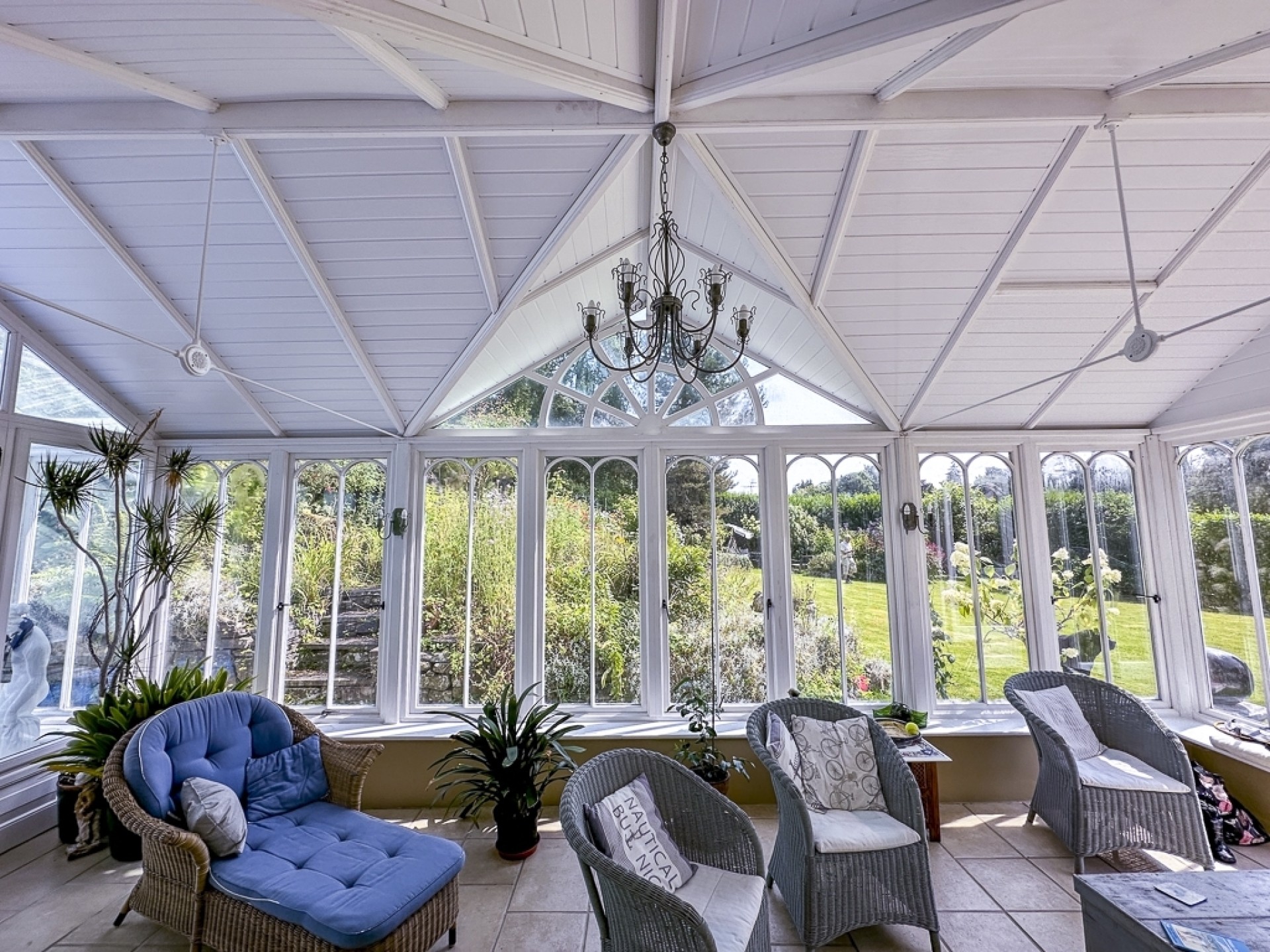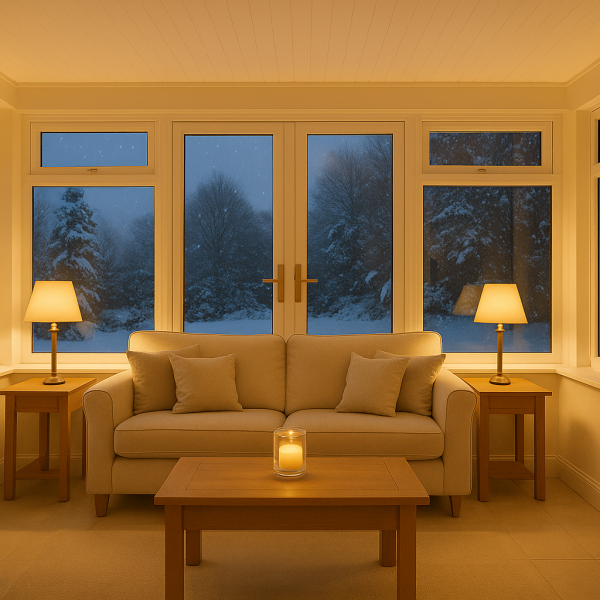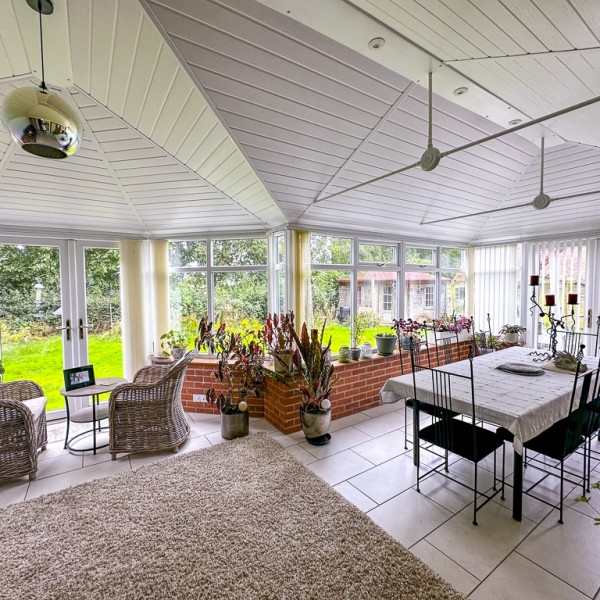
Conservatory insulation can transform what is often an underutilised space into a year-round haven. Yet, many homeowners still have misconceptions about the process, the cost and the benefits of insulating their conservatories. In this post, we will debunk common myths surrounding conservatory insulation and provide factual information to help homeowners make informed decisions.
Myth 1: Conservatory Insulation is Too Expensive
One of the most persistent myths about conservatory insulation is that it is prohibitively expensive. While there is an upfront cost to installing high-quality insulation, it’s essential to look at the long-term financial benefits.
Conservatories are often not energy-efficient spaces because of their glass roofs and walls, which make them susceptible to temperature fluctuations. In the winter, they can become extremely cold, leading to increased heating costs, while in the summer, they can become unbearably hot, requiring extra cooling. Insulation helps regulate the temperature, reducing the need for heating and cooling and therefore, lowering energy bills.
In the long run, the savings on energy bills often outweigh the initial cost of insulation. Additionally, insulated conservatories may add value to a property, making it a smart investment for those looking to sell in the future.
Myth 2: Insulation Ruins the Aesthetic of a Conservatory
Some homeowners believe that installing insulation in their conservatories will ruin the aesthetics of the space, particularly the glass roof. However, this is not the case with modern insulation solutions.
Insulation panels are designed to be discreet, and they can be installed without compromising the design of your conservatory. For instance, our CHRIS® system can be placed on existing structures, keeping the space visually appealing. This paired with our Internal Finishing Board (IFB) helps maintain the bright and airy feel of the conservatory while improving its thermal efficiency.
Additionally, with our high-quality insulation, you’ll be able to allow natural light to flood into the space through the windows without causing uncomfortable temperature variations. The result is a conservatory that looks as stylish as ever, but is much more comfortable to use throughout the year.
Myth 3: Conservatories Don’t Need Insulation if They Have Double Glazing
While double glazing can certainly improve the energy efficiency of a conservatory, it’s not enough to maintain a stable temperature in such a large glass structure. Double-glazed windows reduce heat loss, but the roof and walls of the conservatory still allow significant heat transfer. Insulating the roof is crucial for keeping the conservatory warm in winter and cool in summer.
In fact, the roof is often the main culprit for heat loss in conservatories. Heat rises, and without insulation, it escapes quickly through a glass roof. By adding insulation to the roof, homeowners can retain heat more effectively, making the space more energy-efficient.
Moreover, conservatory roof insulation can prevent the space from becoming uncomfortably hot in summer, as it helps to reflect sunlight away. Insulating the roof and walls works alongside double glazing to create a fully insulated space that can be used all year round.
Myth 4: Conservatory Insulation Causes Damp or Condensation Issues
A well-ventilated and properly installed insulation system does not cause damp or condensation. In fact, it can help reduce these problems by creating a more stable internal environment. Conservatories are prone to condensation due to their exposure to different weather conditions and temperature fluctuations. When the conservatory is too cold or too hot, moisture can build up, leading to damp issues.
Our CHRIS® system is designed to be breathable, allowing moisture to escape while preventing heat loss. Additionally, our professional installers ensure that the insulation is fitted correctly, leaving no gaps that could lead to condensation problems.
If condensation is a concern, homeowners can also consider installing a dehumidifier or improving ventilation to ensure that moisture is adequately controlled. With the right insulation and proper care, damp and condensation can be effectively managed.
Myth 5: Insulating a Conservatory is a DIY Job
While some homeowners may be tempted to insulate their conservatories themselves, it’s not a task that should be taken lightly. Proper insulation requires a thorough understanding of materials, installation techniques and the structure of the conservatory.
Professional installation is crucial to ensure that the insulation is fitted correctly and provides the maximum thermal benefits. Incorrectly installed insulation can lead to gaps, poor performance and even structural issues. Additionally, a professional installer will be able to advise on the best type of insulation for your conservatory and ensure that it is compatible with your existing structure.
DIY insulation might seem like a cost-saving option, but in the long run, it could result in higher costs due to inefficiencies or the need for repairs. It’s always best to consult with a conservatory insulation expert to ensure the job is done right.
Conservatory insulation is an excellent investment that can transform a seasonal space into a comfortable, year-round room. Despite common myths, insulation is affordable, aesthetically pleasing, and highly effective in improving energy efficiency. By debunking these myths, we hope to encourage more homeowners to consider the long-term benefits of insulating their conservatories and enjoying the comfort and cost savings that come with it.




